The world Android is so active that there is always something new in it. Events occur every day that can be easily missed. To prevent this from happening, every week we select the most interesting news for you in our digest. This week, too, had a lot to talk about. For example, about Huawei, which held a presentation in Barcelona despite the cancellation of the annual mobile congress MWC. In addition, the coronavirus continues to affect smartphone manufacturers, and even receive updates for their smartphones. Well, and of course it was not without loud news from Google. You will learn more details from this collection.
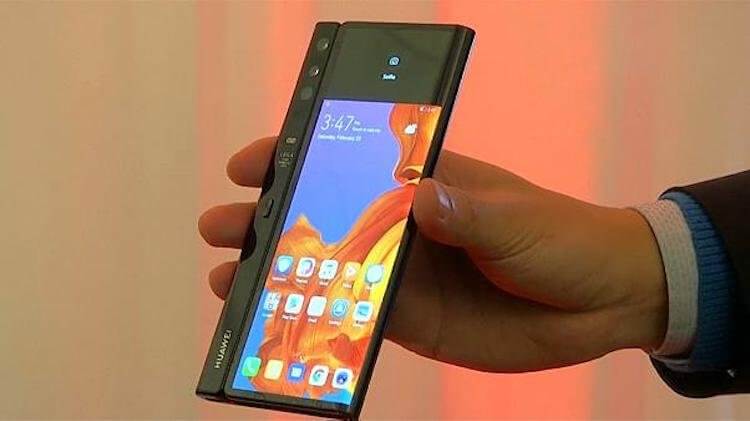
Huawei held its presentation despite the cancellation of the MWC.
Google introduced new animations for Android
Remember the presentation Android Lollipop where we were shown Material Design with lots of cool animations? Since then, of course, application interfaces have really become 'material', but with animations somehow it did not work. The situation could be changed by a new motion-system, which was released by Google. It will allow developers to implement extremely interesting animations. The purpose of a motion system is to help users navigate and understand the relationship between application components. By the way, Google recently came up with a new control gesture in Android 11.

Google introduced a new animation system Android
In 2018, Google introduced an updated Material Design 2.0, but even there weren't any advanced animations.
The new system will allow interface elements to change their shape. So, for example, a list item can smoothly expand to full screen, and a floating button, when pressed, can transform into a modal window:

Developers will be able to implement transitions between parts of the list:

New window animations can look like this:

So far, this animation is only available at the system level. For example, in the settings Android.
Dialog boxes can now appear with beautiful fade animations:

Element transformation

The most interesting thing can be the transformation of the element. Now when you click on any element, it will be able to smoothly transform into another part of the interface. For example, it can be a list, clicking on an element of which smoothly opens a new window to full screen. It can be a music player: clicking on the cover of a composition will smoothly open a window with a music player. This interaction with the system makes the interface elements more coherent and understandable. The connection between each of the elements is traced.

In addition, an element can be transformed into another element not only in the case of a detailed page that takes up the entire screen, but also in the case, for example, with a small menu. The dialer button may not expand the keyboard to the full screen, and the composition launch button will only expand the controls to a small area at the bottom of the interface.

Google has also worked on the desktop interface. Applications in DeX mode will have these interesting animations adapted to the larger diagonal.
Three-axis animations are now available to application developers. Fade effect with a window appearing on the side, the same effect with a window appearing at the top or bottom, and fading the window along the z-axis:

And this can apply not only to windows, but also to small interface elements:

The least interesting is the new fade-through animation. It can be used in cases where there is no clear connection between the interface elements:

And this effect can also affect not only full-screen windows, but also small elements, for example, buttons or labels:

Animations Android Lollipop

In 2015, Google showed Material Design for the first time, and, in my opinion, right now they managed to implement the animations that were presented in the presentation video. Previously, we were only offered an updated design, without any special transitions. I remember being surprised at these smooth animations in 2015 and how disappointed I was that Google Play simply didn't have apps like this. And just now, Google has released a Motion system that will allow developers to implement unusual transitions and make interface development based on animations.
Why do people like iOS? Yes, simply because there are amazing animations – they are very smooth and enjoyable. In a compartment with a low touchscreen response in iPhone, the user gets some special emotions. С Android – there are no such devices. And I hope that with the new animation system Google will somehow be able to get closer to Apple in this matter.
This question remains open. Not so long ago, a new motion system became available to users of the Flutter mobile interface framework, and it is possible that in the near future the developers will put animation in the forefront. In addition, this is a fairly logical step, because in terms of design, in essence, moving forward today is possible only with the help of improved animations, because something else can hardly surprise users.
Did you like the new animations Android? Share your opinion in the comments and do not forget to subscribe to us in Yandex Zen.
Huawei showed Apple how to make smartphones, tablets and laptops
Huawei is a company that you want to respect and set an example. Despite the fact that the United States imposed sanctions on her and generally made a lot of efforts to, if not remove her from the market, then at least greatly complicate her life, she was able not only to stay afloat, but also to benefit from what happened. As a result, the Chinese improved their financial performance compared to the previous year, created a competitor to Google Play, and even presented several interesting new products, each of which I would buy without hesitation. Almost.
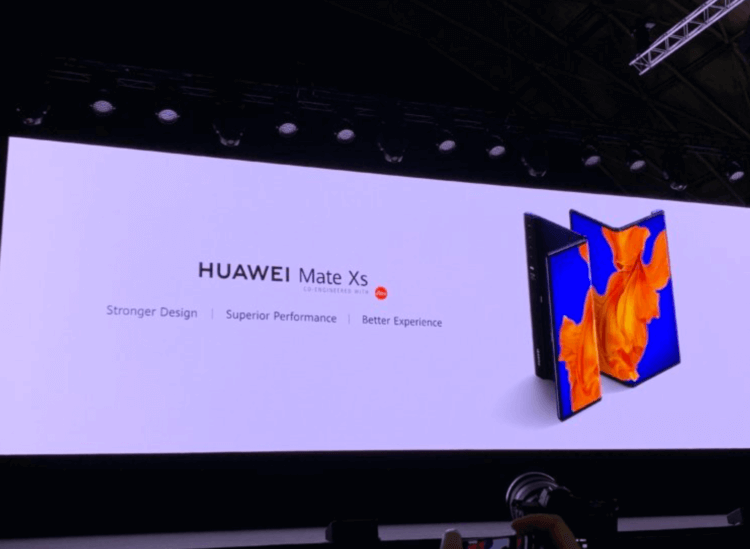
Huawei held another presentation despite coronavirus
No, this is not Huawei Mate X, which Huawei introduced a year ago, and then forgot about it for more than six months and pretended that it did not exist. Before you is the second generation of the company's foldable smartphone, which, according to the assurances of the Chinese, is better than its predecessor in everything.

Huawei Mate XS has changed internally, but externally remains almost identical to Mate X
Here they twisted the hardware, equipping the novelty with a Kirin 990 processor, improved the hinge, which now has a more reliable and compact design, and also expanded the functionality of the device. Here you have an advanced cooling system, and support 5G, and an ultra-sensitive Leica camera, which consists of four modules of 40, 16 and 8 megapixels. The fourth role is played by the ToF sensor, which is responsible for measuring the depth.
Everything about it is good, but I, as a consumer, have a question: how should I understand all this, looking at Huawei Mate Xs? Of course, I can read the brochure that comes with the kit. But like this, live, how am I supposed to understand that this is a new and improved generation? It turns out that in no way. After all, the novelty has exactly the same appearance as its predecessor, and this, in my opinion, is far from the best choice. It doesn't even have Google services like the 'old man'.
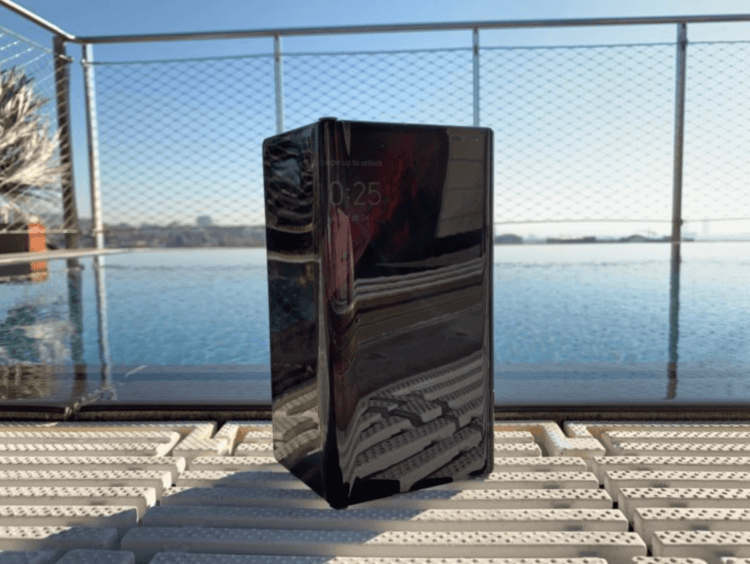
The foldable display Huawei of the Mate Xs is still covered with a plastic sticker and glares like a mirror
Therefore, even if we forget about the dubious reliability of such a form factor, it will be quite difficult to get rid of negative associations. Still, the first Mate X today is perceived as an under-innovation, which was released to people with a delay, and then they still did not manage to launch it globally. However, this time the Chinese promise to take into account their mistakes and release Huawei Mate Xs to the world market. It will be sold at a price of 2499 euros, which is quite a lot, considering that we are slipping the same Mate X. After all, personally I still do not really understand why it is so necessary and what to do with it? Especially against the backdrop of our next hero.
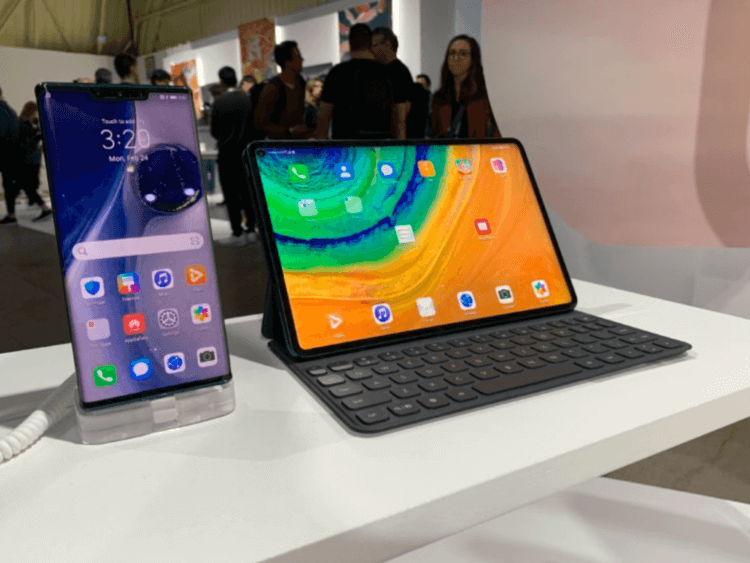
Huawei MatePad Pro is similar to iPad Pro, but much more functional than it
Much more interesting from the point of view of appearance and prospects, in my opinion, looks like Huawei MatePad Pro. This is a new tablet that the Chinese have released and I really like it. To be honest, looking at it, I even want to change my iPad Pro – the novelty looks so great. The MatePad Pro has a 10.8-inch display, 2K resolution, 540 nits brightness and occupies 90% of the front panel, and the front camera is inscribed in a small island-style notch in the upper left corner. You don't even pay attention to it on such a big screen. As a result, you get the feeling that you are working with one continuous display.
Huawei tried to make not just a tablet, which most people perceive as a bedside media combine, but a full-fledged working tool. From a hardware point of view, the MatePad Pro is a complete copy of the Mate Xs. It is based on the Kirin 990 processor, 6/8 GB of RAM and artificial intelligence, which in a special way redistributes the load between the cores, thereby increasing the speed of most tasks. And to emphasize the professional orientation of the tablet, Huawei equipped it with support for the Smart Magnetic Keyboard, M-Pencil and split-screen mode, multi-window mode and the ability to connect to a smartphone due to the 'Multi-screen' function.
Multiscreen is a really cool feature that allows you to display an image from a smartphone to a tablet, transfer files between them by simply dragging and dropping and access data stored in the memory of one device from another, not to mention the ability to receive and receive calls. The result is even cooler than Apple. At the same time, the cost of MatePad Pro in European retail will be from 549 dollars for the version in the basic configuration to 699 euros – in the top-end.
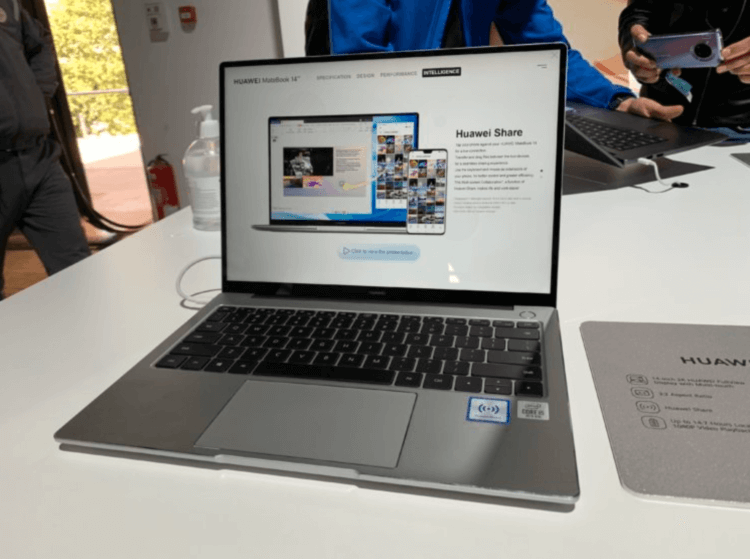
The Matebook X Pro is designed in the style of typical ultrabooks, but its functionality is broader than that of any of its classmates.
Well, for those who are not satisfied with a tablet, Huawei presented an updated series of laptops Huawei MateBook X Pro. The novelty is an excellent indicator of how much a manufacturer can advance in the development of even a new sphere for itself with sufficient perseverance and technological development. After all, the MateBook X Pro does not at all pretend to be a MacBook, as many ultrabooks did before.
Despite the fact that it has an all-metal body, because of which it can be confused with the company's solutions from afar Apple, upon closer examination you clearly understand that the Chinese are really good at technology.

Screen Huawei The Matebook X Pro recognizes touch and even responds to gestures
The first thing that catches your eye when looking at the MateBook X Pro is the display. It occupies 91% of the laptop's lid area and has a rather atypical 3: 2 aspect ratio and 3K resolution. If desired, it can be used as a hybrid, because the display supports touch control and even gestures with which you can take screenshots and perform other quick commands.
With iron, too, everything is fine. Responsible for laptop performance Intel Core i5-10210U and i7-10510U, discrete NVIDIA GeForce MX250 graphics card with 2 GB of GDDR5 RAM. To provide effective cooling, Huawei had to develop their own cooler Huawei Shark Fin Fans 2.0 with enlarged blades that form a powerful airflow. And thanks to a 58 Wh battery, the laptop is able to guarantee smooth operation throughout the working day.
However, this is not all. For lovers of all the most sophisticated, the fastest Wi-Fi module is installed here, Bluetooth 5.0, support for fast charging technology Huawei SuperCharge with a power of 65 watts. But the coolest thing is that Huawei here, too, it did not forget about the ecosystem, having realized the ability to quickly exchange data between smartphones and tablets based on EMUI, if necessary, viewing data from the memory of one device using another, despite the fact that the laptop works on the base Windows.
It turns out that Huawei outperformed Apple not only in design, but also in usability, which was not expected of it at all. However, this was reflected in the price. The base MateBook X Pro was priced at 1,500 euros, and the top-end – at 2,000 euros, which is quite significant. I think if the Chinese, who have not yet had time to declare themselves in full in the field of computer engineering, set 15-20% more democratic prices for new products, their solutions would be bought much more willingly.
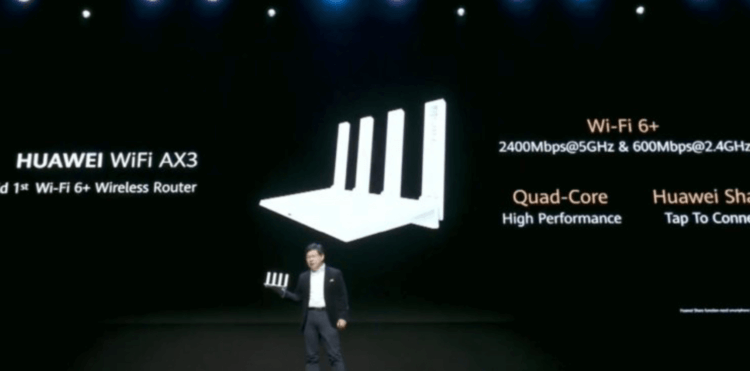
But once Huawei was known only for its routers
Well, Huawei would not be herself if it had not released a line of telecommunication gadgets. These are Huawei Wi-Fi AX3 and Huawei 5G CPE Pro 2 routers supporting Wi-Fi 6+ standard. This is the most advanced standard and is a complete alternative 5G. Thanks to it, the router can operate at incredible speeds up to 3 Gb / s, which is enough to download an HD clip in just 3 seconds. What more could you want?
Huawei is the company that could. She demonstrates a tremendous propensity for technology development in whatever areas she undertakes to conquer. Thanks to the perseverance and staff of highly professional employees Huawei, in just 10 years, she was able to turn from a manufacturer of routers and telecommunications equipment into a brand number 1, which everyone has heard of. And their branded products once again emphasize that patience and work will grind everything.
Xiaomi cannot update their smartphones due to coronavirus
Despite the fact that the coronavirus has not yet been defeated, recently we have practically stopped mentioning it. And what should I mention if nothing has changed during this time? The production of many devices is still at a standstill, due to which the supply of new batches of smartphones, headphones and smart watches has slowed down, and prices, as expected, have gradually crept up. The inhabitants of Russia somehow did not feel any other negative consequences of the outbreak of the epidemic. Well, at least that's what they thought until Xiaomi came out with a statement that shocked many.

If your smartphone has stopped receiving updates, you should know that coronavirus is to blame
Xiaomi was forced to postpone the release of Android 10 for some smartphones due to the coronavirus. Sumit Sonal, Brand Manager Xiaomi in India talked about this. According to him, the company planned to start distributing the update for Xiaomi Mi A3 in February, but due to the spread of the disease, it froze this initiative indefinitely. Apparently, this is not the only device that was left without an update, since by now most of the smartphones in the line Redmi have not been updated either.
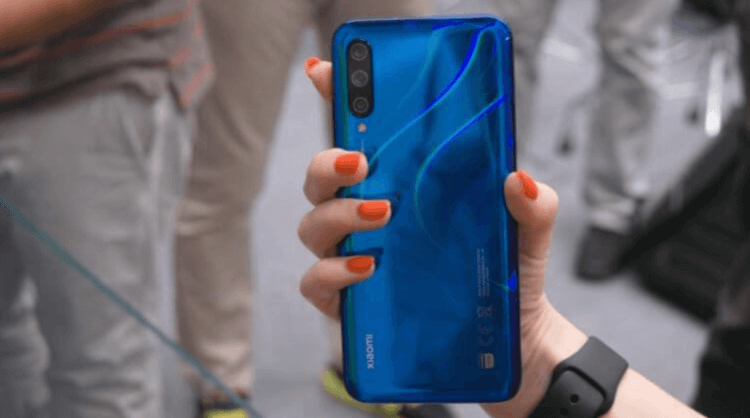
Xiaomi Mi A3 is the most useless smartphone in the lineup
Of course, Sonal explained, the coronavirus did not affect the cloud infrastructure Xiaomi, through which updates are distributed. Simply because of the quarantine introduced in China, the company was forced to close a fair amount of laboratories and offices, on the basis of which new firmware versions were developed MIUI. As a result, employees who were responsible for debugging and releasing updates are absent from the workplace, and therefore cannot fulfill their duties.
However, there is a very important point here, which, in my opinion, Xiaomi wants to cover up with the coronavirus. The fact is that Xiaomi Mi A3 belongs to the line of smartphones Android One, which operate on the basis of pure Android, which allows them to update among the first, since they are not need optimization MIUI. Nevertheless, Android 10 came out about six months ago, and Xiaomi never bothered to release an update for the smartphone, which, according to the logic of things, should have received it almost before everyone else. After all, Xiaomi Mi A1, neither Mi A2, nor even Mi A2 Lite had such delays, since Google provides the sources to the manufacturers at the same time as the release.
It is quite clear that Xiaomi had Android 10 sources for Xiaomi Mi A3 even before the outbreak of coronavirus. In the end, the update came out in September, and the danger of the disease became known only by the end of January. What, then, did the Chinese do that they could not release the update on time, as it happened with all the other smartphones of the line? I have no idea. Perhaps, the atypical characteristics of the smartphone affected, and perhaps Xiaomi simply had more significant devices that she wanted to update in the first place, which, given the low price of Mi A3, sounds quite logical.
The coronavirus justification is utter nonsense, and I don't believe it at all. Nevertheless, Xiaomi at least tried to justify itself, while Huawei regularly ignores its users, either not releasing updates for branded smartphones at all, or doing it with such a long delay that when the update still comes out, it looks like a mockery or a mockery. I know this firsthand, because my View 20 has not been updated for more than four months, and when it was updated yesterday, it turned out that this is not the current March security patch, but only the December one. It would be better if they lied, that's right.
Google wants to bring its services back to smartphones Huawei
The confrontation Huawei and Google, due to which the Chinese company lost the opportunity to use the services of the search giant on its smartphones, has had a stronger impact on the industry than one could imagine. Despite the fact that Huawei already had its own AppGallery app store, it was hard to imagine that in less than a year it would become the third most downloaded catalog on the market, behind only Google Play and the App Store. However, it cannot be ruled out that in the foreseeable future the Chinese will abandon the progress made, especially since there really is a reason.

Google services may still appear on smartphones Huawei
Google has applied to the White House for a license to resume cooperation with Huawei, admitted the head of the direction Android and Google Play Samir Samat. This is a mandatory requirement, since Huawei, despite clear relief from the US, is still under sanctions and is recognized as a threat to the country's national security. If the authorities consider the request to be justified, they will give Google their consent and indicate a time frame within which the companies can work together.
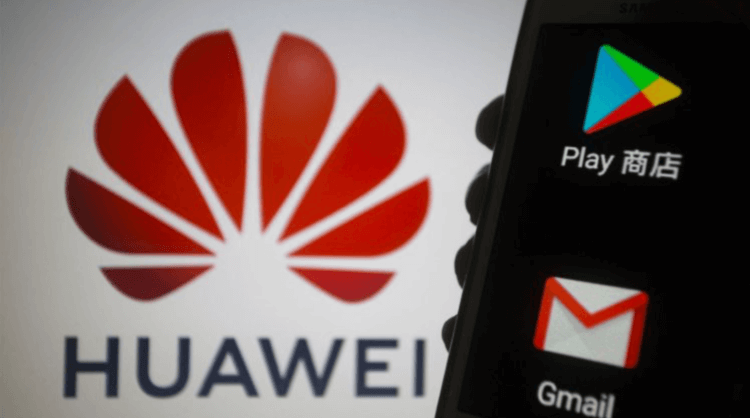
For Google services to reappear in smartphones Huawei, you need permission from the White House
According to Samat, Google is interested in continuing cooperation with Huawei, and therefore was forced to ask the US government for permission to resume the joint activities. True, when exactly the submitted application will be considered and under what conditions it will be approved, if approved at all, is not specified. Indeed, the country's authorities reserve the right to approve or prohibit cooperation of local companies with foreign enterprises in conditions close to wartime. Previously, a similar application was submitted to the White House Microsoft, which, however, was allowed to cooperate with Huawei.
Google's desire to re-partner with Huawei is understandable. After all, the audience of smartphones and tablets of the Chinese brand is extremely extensive, and the presence of Google Mobile Services in their firmware gives direct access to the information of millions of users around the world. Thus, Google will be able not only to control a huge number of devices, but also to know what their owners are interested in, what they are missing and what they are doing. Otherwise, only Huawei will own this information and will almost certainly use it to create a real alternative to the services of the search giant.
Itself Huawei is also quite categorical about returning to Google Mobile Services. Earlier this year, Fred Wangfei, the manager of the Austrian office Huawei, said that the company does not want to be dependent on US policies and the mood of its president, and therefore does not plan to return to using Google services. Instead, the Chinese want to focus on building their own ecosystem so that they can compete Apple and Google at any time.
However, we know that Huawei quite easily changes its mind depending on the current alignment of forces and the orders it receives from above. Therefore, it should not be too surprising if the Chinese, after Google receives a license to resume cooperation, immediately begin to pre-install Google Mobile Services on their devices. After all, in this way, at least they will be able to give users of branded smartphones and tablets, deprived of access to Google Play and Google Pay, to download all the applications they want, and to pay for purchases in a contactless way, which is greatly lacking in the Cold War.
